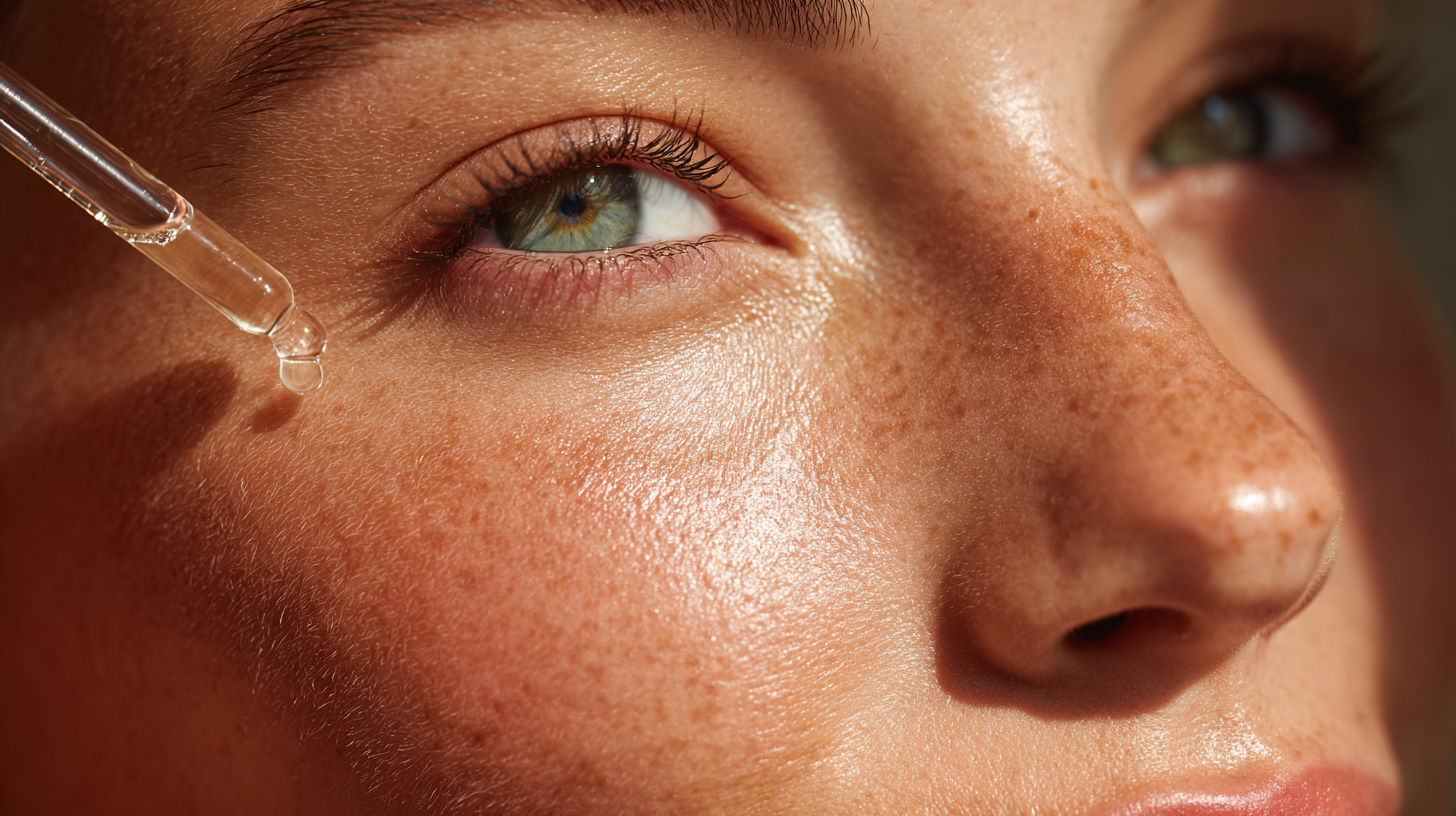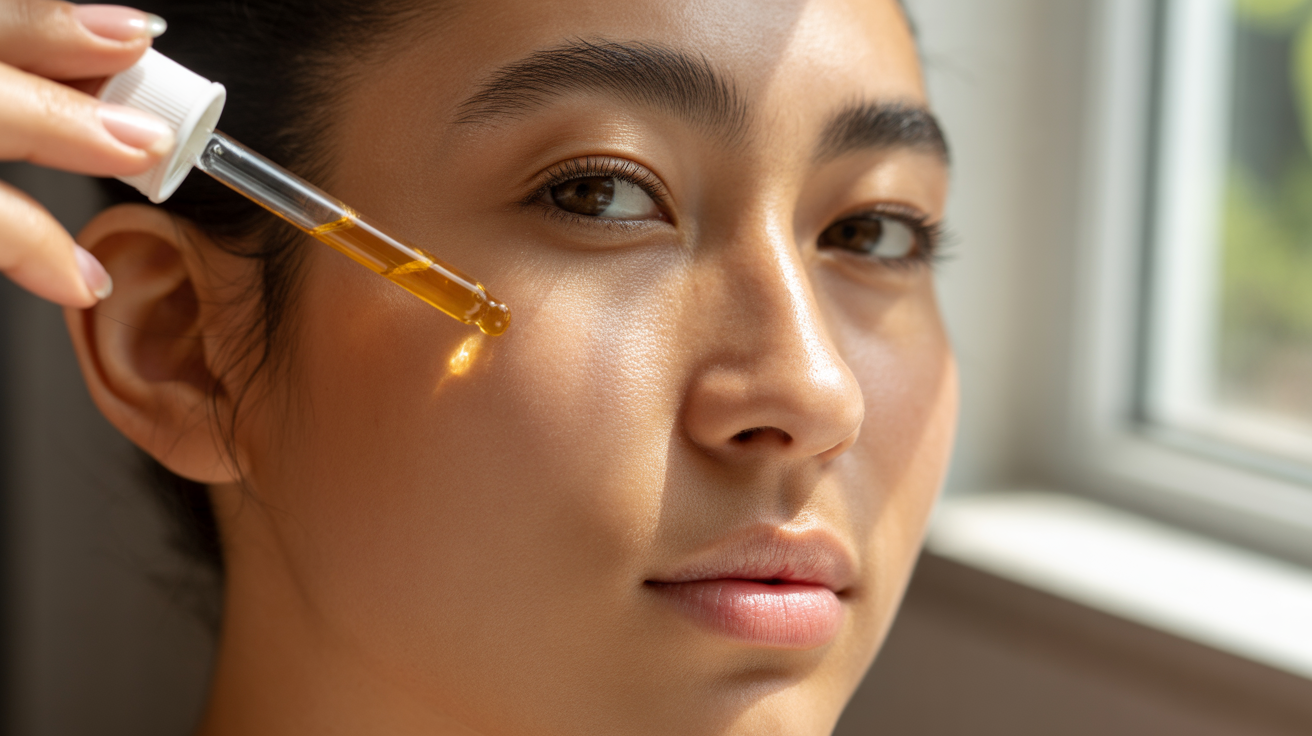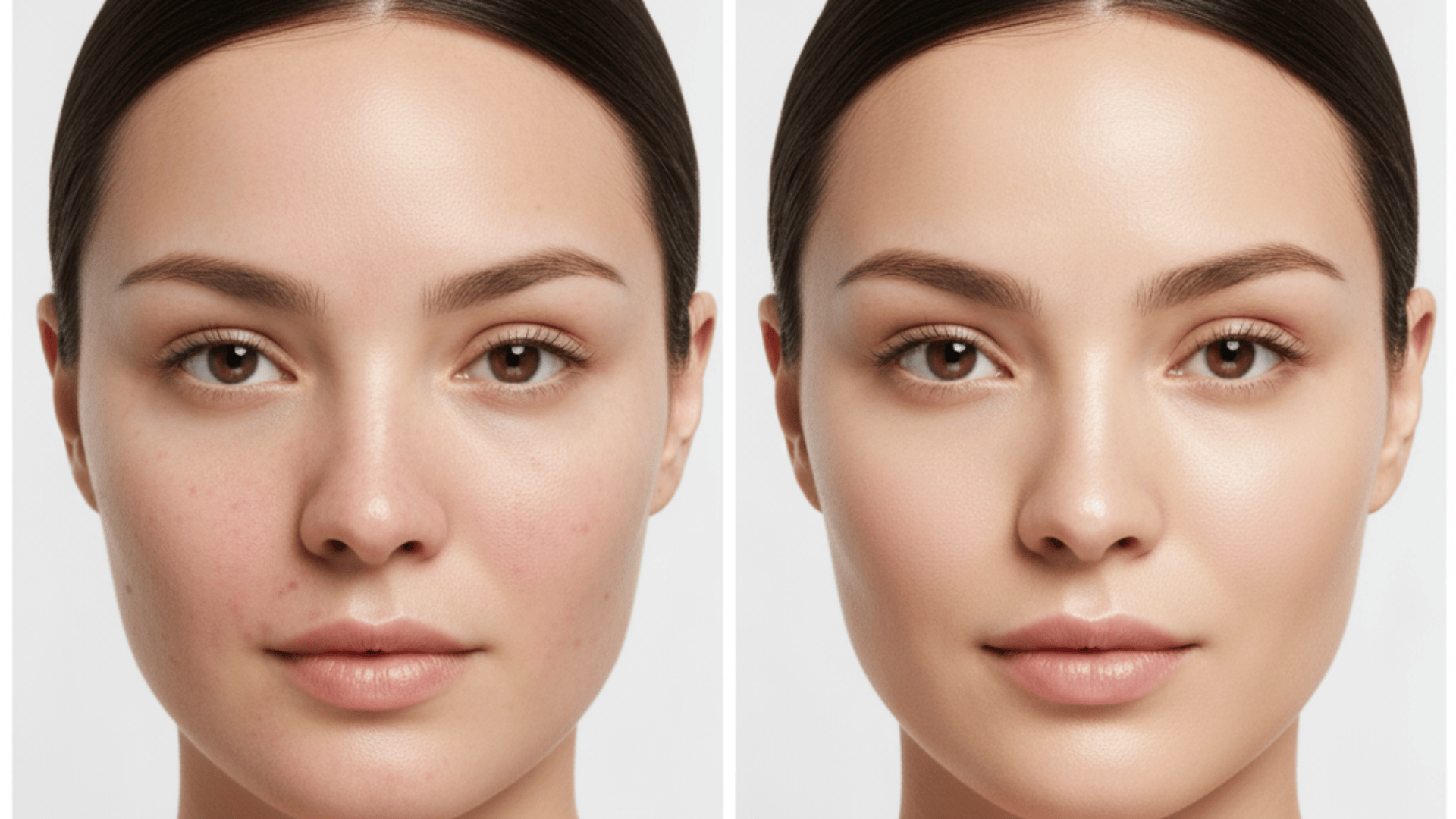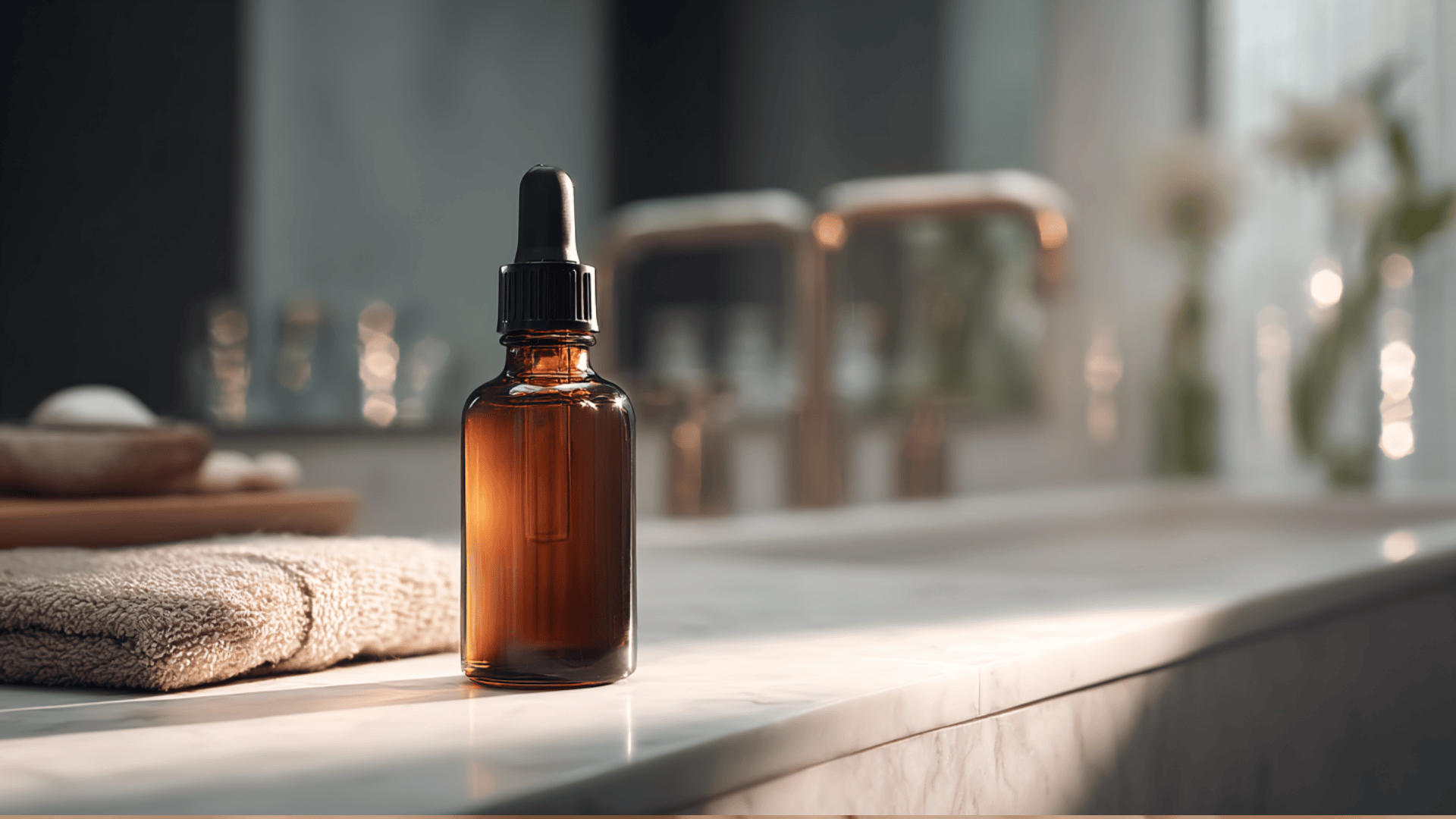If you’ve been into skincare lately, you might have heard about mandelic acid. It’s becoming pretty popular, and for good reason!
So what exactly is mandelic acid? It’s a type of alpha hydroxy acid (or AHA for short) that comes from bitter almonds.
Unlike some other acids that can irritate sensitive skin, mandelic acid works more slowly and gently.
That makes it a great choice for people who want clearer, smoother skin without the redness or stinging that sometimes comes with stronger treatments.
That’s where mandelic acid shines! When you’re dealing with acne, dark spots, fine lines, or just want smoother skin texture, this ingredient might be worth trying.
Here is everything you need to know about mandelic acid.
What Does Mandelic Acid Do?
Mandelic acid is an alpha-hydroxy acid derived from bitter almonds that works gently on your skin. Its larger molecular size means it penetrates slowly, making it less irritating than other acids.
Once applied, it exfoliates dead skin cells to reveal fresher skin, unclogs pores to prevent blackheads, and improves overall texture.
It also reduces dark spots and hyperpigmentation while stimulating collagen production to soften fine lines.
Additionally, mandelic acid has antibacterial properties that help fight acne-causing bacteria.
This gentle ingredient is ideal for treating acne, fading dark spots, reducing wrinkles, and is safe for sensitive skin and all skin tones.
Is It Safe to Use?
Safety first! Before you start using any new skincare ingredient, you should know whether it’s safe for you.
The good news is that mandelic acid is generally considered safe for most people. However, like any skincare ingredient, there are some important things to keep in mind.
General Safety Tips
Before putting mandelic acid all over your face, try it on a small area of skin first. Put a little bit on your inner arm or behind your ear.
Wait 24 hours to see if you have any reaction like redness, itching, or burning.
When you first begin using mandelic acid, don’t use it every day. Try once or twice a week at first. This gives your skin time to adjust.
Watch out for sun sensitivity. All AHAs, including mandelic acid, can make your skin more sensitive to the sun.
This means you have a higher risk of sunburn and sun damage. Always wear sunscreen during the day when using mandelic acid (honestly, you should wear sunscreen every day anyway!).
Who Can Use It
Mandelic acid works well for many different skin types:
- Sensitive skin: Because it penetrates slowly, it causes less irritation than other acids
- Darker skin tones: It’s less likely to cause post-inflammatory hyperpigmentation (dark spots that can appear after irritation)
- Oily or acne-prone skin: The antibacterial properties help fight breakouts
- Aging skin: It helps with fine lines and texture
Mandelic Acid Benefits

Now let’s dive into all the amazing benefits of mandelic acid! This ingredient offers several advantages that make it stand out in the crowded world of skincare.
1. Gentle Exfoliation for Sensitive Skin
Mandelic acid’s larger molecular size makes it penetrate skin slowly, causing less irritation than other acids.
This gentle action reduces redness and stinging, making it perfect for people who find other exfoliants too harsh.
2. Helps Improve Acne and Blemish-Prone Skin
This acid attacks acne from multiple angles by unclogging pores, killing acne-causing bacteria, and regulating oil production. It also helps fade those stubborn dark spots that remain after pimples heal.
Dermatologists recommend it because it treats breakouts gently without the dryness that harsh acne treatments cause.
3. Reduces Hyperpigmentation and Dark Spots
Mandelic acid speeds up cell turnover, helping your skin shed dark, pigmented cells faster and replace them with fresh, evenly colored ones.
The gentleness makes it particularly safe for darker skin tones without causing additional pigmentation issues.
4. Softens Fine Lines and Improves Texture
By stimulating collagen production, mandelic acid helps keep skin firm and plump while reducing fine lines.
It removes dead cells that make skin rough and bumpy, creating a smoother, softer texture. Your skin will feel better to touch and develop a more radiant, youthful appearance overall.
5. Suitable for All Skin Tones, Including Skin of Color
Unlike stronger acids that risk causing dark spots on deeper skin tones, mandelic acid’s gentle nature makes it safe for everyone.
It has a proven track record with Black, Latinx, Asian, and other people of color. Dermatologists specifically recommend it for treating melasma and hyperpigmentation in all complexions.
Uses of Mandelic Acid

Now that you know all the benefits, let’s talk about how to actually use mandelic acid in your skincare routine.
Daily Skincare Routine:
For everyday use, you’ll typically find mandelic acid in these products:
- Serums: These are the most popular way to use mandelic acid. You apply them after cleansing and before moisturizing.
- Toners: Some toners contain mandelic acid for gentle daily exfoliation.
- Cleansers: These provide the gentlest amount since you rinse them off.
At-Home Exfoliation
If you’re using mandelic acid at home, here are some guidelines:
- Concentration: Start with a lower concentration (around 5-10%) and work your way up if needed.
- Frequency: Begin with 1-2 times per week. Once your skin adjusts, you might use it every other day or even daily.
- Layering: Apply mandelic acid products to clean, dry skin. Wait a few minutes before applying other products.
Mandelic Acid Peel: Before and After

Professional mandelic acid peels offer more dramatic results than at-home products, but they require some preparation and downtime. Here’s what you need to know about the process and timeline.
What is a Mandelic Acid Peel?
A mandelic acid peel is a professional treatment where a high concentration of mandelic acid (usually 20-40%) is applied to your skin for a specific amount of time.
It’s stronger than products you use at home, which means more dramatic results.
The peel works by removing the outer layers of dead skin cells more deeply than daily products can, revealing fresher, clearer skin underneath.
Timeline and Results
| Phase | What to Expect | Results |
|---|---|---|
| Before Treatment | Skin cleansed, assessment done, may need to stop retinoids for a few days | Preparation for optimal results |
| During Treatment (30-45 min) | Peel applied for 3-10 minutes, tingling sensation, then neutralized and removed | Active treatment phase |
| Days 1-3 | Redness like mild sunburn, keep moisturized, avoid makeup for 24 hours | Initial sensitivity |
| Days 4-7 | Peeling and flaking occur; don’t pick at the skin | Fresh skin revealed |
| Weeks 2-4 | Dark spots fade, texture improves, pores appear clearer | Visible improvement |
| After 3-6 Treatments (2-4 weeks apart) | Significant reduction in hyperpigmentation, fine lines, and texture issues | Maximum results |
Important Safety Notes:
- Only get peels from licensed professionals (dermatologists, nurse practitioners, or licensed estheticians)
- Follow all aftercare instructions carefully
- Always wear SPF 30+ and reapply throughout the day
- Mandelic acid peels are particularly safe for darker skin tones
Comparison with Other Acids (e.g., Glycolic Acid)
You’ve probably heard of other acids like glycolic acid or salicylic acid. So, how does mandelic acid compare? Let’s break it down.
| Acid Type | Molecular Size | Penetration | Irritation Risk | Best For | Key Benefit |
|---|---|---|---|---|---|
| Mandelic Acid | Large | Slow/Gentle | Low | Sensitive skin, skin of color, acne with hyperpigmentation | Antibacterial + gentle exfoliation |
| Glycolic Acid | Very Small | Deep/Fast | High | Tough skin, deep wrinkles, significant sun damage | Fast, dramatic results |
| Salicylic Acid | Medium | Into pores (oil-soluble) | Medium | Very oily skin, blackheads, cystic acne | Deep pore penetration |
| Lactic Acid | Medium | Moderate | Low | Dry or dehydrated skin, mild concerns | Hydrating + exfoliating |
When to Choose Mandelic Acid:
Pick mandelic acid if you:
- Have sensitive skin
- Are you a person of color concerned about hyperpigmentation
- Deal with acne and dark spots
- Found glycolic acid too harsh
- Want gentle but effective exfoliation
- Are new to chemical exfoliants
Can You Layer Acids?
Generally, you should NOT use multiple exfoliating acids in the same routine, especially when starting out.
This can cause over-exfoliation, damaged skin barrier, severe irritation, and increased sensitivity.
However, once your skin is well-adjusted, some people use different acids on different days or at different times of day.
Remember, stronger isn’t always better! Many people get excellent results with gentle mandelic acid and never need anything more aggressive.
Conclusion
Mandelic acid is a gentle alpha-hydroxy acid that delivers impressive results for various skin concerns.
Its larger molecular size makes it less irritating than other acids, perfect for sensitive skin and all skin tones.
Battling acne, dark spots, rough texture, or fine lines? Mandelic acid can help improve your skin with consistent use.
Remember to start slowly, always wear sunscreen, and be patient; great skin takes time! The beauty of mandelic acid is that it’s both effective and accessible, fitting any budget or lifestyle.







